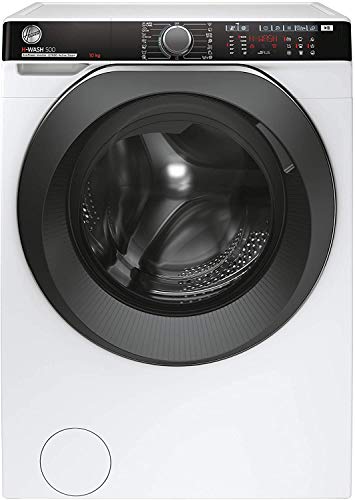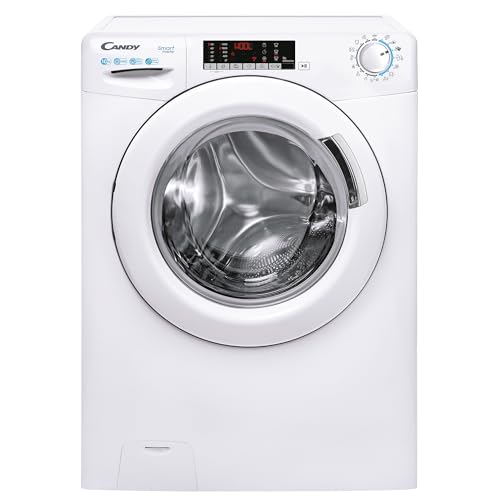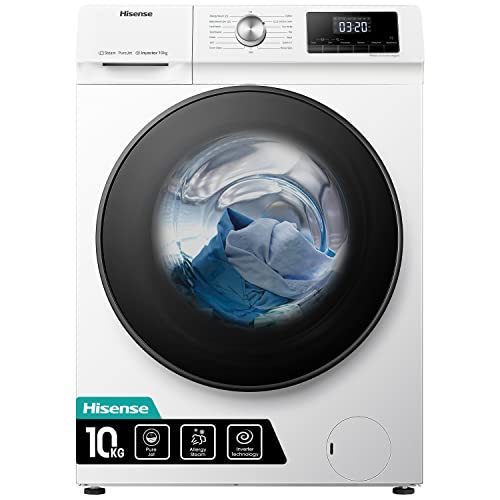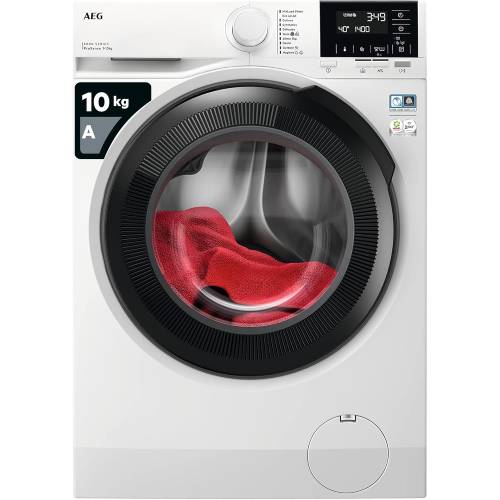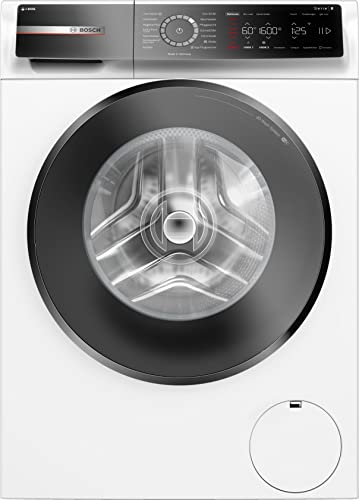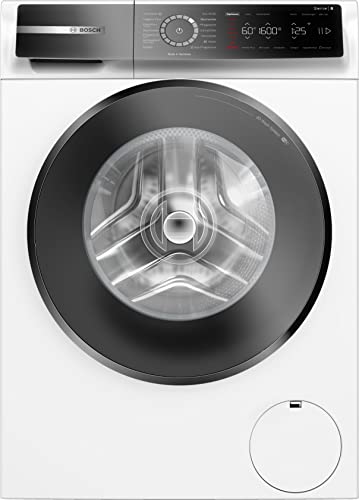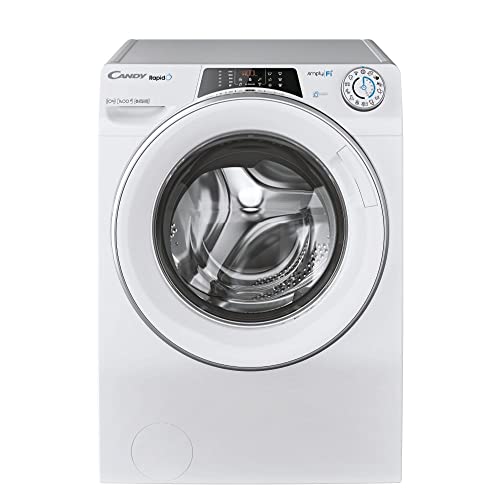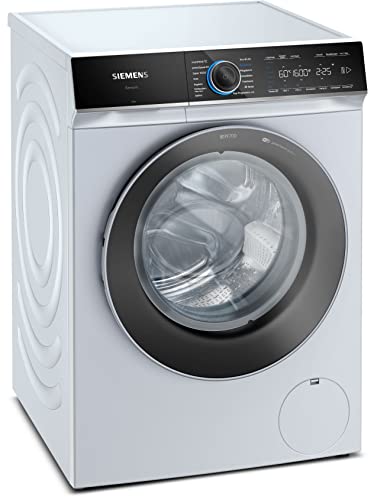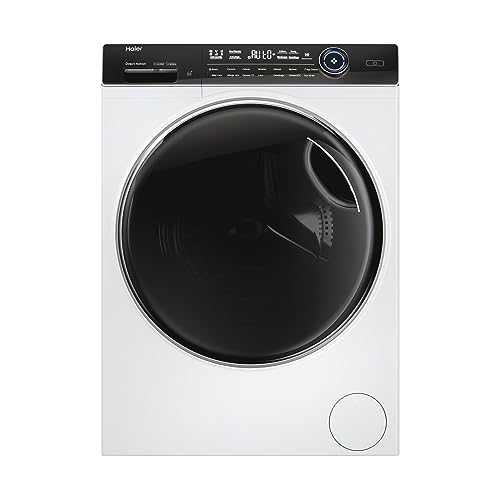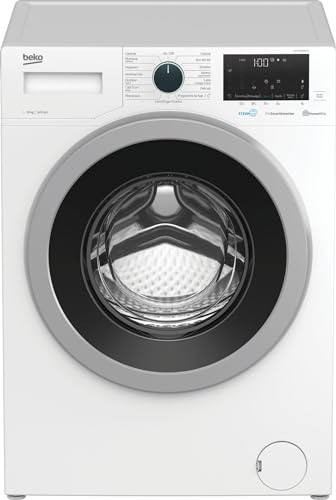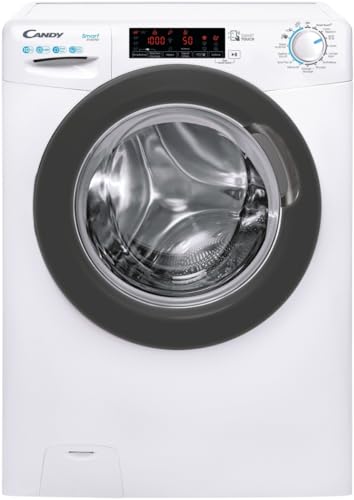Are 10 kg washing machines worth it?
Washing machines with a 10 kg capacity achieve an average score of 7.1, higher than the market average of 7.1. Their performance surpasses 7 kg machines (6.6) and 8 kg machines (7.1), but is slightly below 9 kg machines (7.5).
The user rating for 10 kg washing machines is 8.2 points, higher than most other capacities. In comparison, 7 kg machines have an average rating of 8.2, 8 kg machines 7.9, and 9 kg machines 8.3 points.
Approximately 10% of washing machines on the market have a 10 kg capacity.
How much laundry can a 10 kg washing machine hold?
A 10 kg washing machine can accommodate a substantial amount of laundry, depending on the type of items being washed. Consider the weight of individual garments, as this will determine the total number that can be loaded.
A 10 kg washing machine can hold the following items.
- 45-55 t-shirts (150-200 g each)
- 12-14 pairs of jeans (600-700 g each)
- 18-22 sweaters (400-500 g each)
- 16-20 bath towels (500-600 g each)
- 180-200 pairs of socks (50 g each)
- 6-8 duvet covers (1000-1500 g each)
For example, a mixed load might include 15 t-shirts, 3 pairs of jeans, 5 sweaters, 3 bath towels, and 15 pairs of socks, fitting within the 10 kg capacity of the machine.
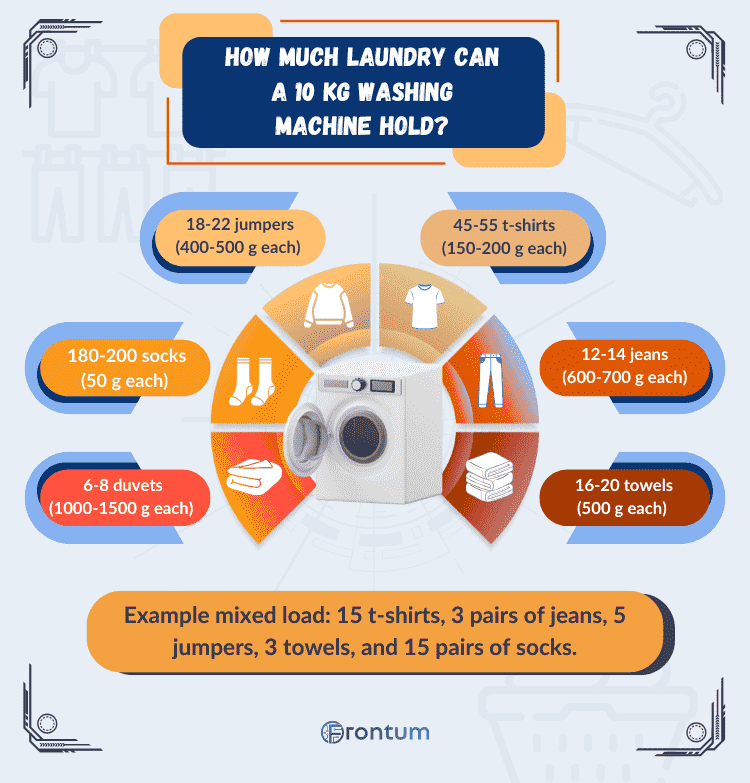
What are the main advantages of 10 kg washing machines over other capacities?
10 kg washing machines have the following advantages compared to other capacities.
- Lower average cost: 10 kg machines cost an average of £370, which is £10 less than the market average (£380) and £110 less than 9 kg machines (£480).
- Better quality-price ratio: 10 kg machines achieve a quality-price ratio of approximately 8.2 points, higher than the market average of 7.1 points.
- Higher user ratings: 10 kg models have an average user rating of 8.2 points, higher than the market average of 8.1 points.
- Prevalence of inverter motors: About 80% of 10 kg machines are equipped with inverter motors.
- Larger drum volume: 10 kg machines have an average drum volume of 62 litres, 7 litres more than the market average of 55 litres.
- Energy efficiency: They consume an average of 51 kWh per 100 cycles, with 66% belonging to energy efficiency class A.
- High spin speed: 17% of 10 kg machines reach a maximum spin speed of 1600 rpm, while 72% reach 1400 rpm.
- Wide range of spin speeds: 70% of 10 kg machines can achieve a minimum spin speed of 400 rpm.
- Specialised wash cycles: Many 10 kg machines include cycles such as Jeans, Shirts, Duvets, Hygiene, Anti-Allergy, and Baby Care, as well as features like anti-crease, anti-stain, extra rinse, quick wash, wash assist, and prewash.
- More features: On average, 10 kg machines have 13 features, 3 more than the market average.
- Advanced features: Most 10 kg machines are equipped with laundry detection systems, foam control, steam technology, self-cleaning functions, memory functions, load balancing systems, and smart diagnostics.
- Smart technology: The most advanced 10 kg models may include Wi-Fi, pre-mix technology (22%), or AquaStop systems.
What are the main disadvantages of 10 kg washing machines compared to other capacities?
10 kg washing machines have the following disadvantages compared to other capacities.
- Limited availability: Only about 10% of washing machines on the market have a 10 kg capacity.
- No top-loading models: There are no 10 kg washing machines with top-loading designs.
- No slim models: The 10 kg capacity excludes slim options.
- Higher noise levels: On average, 10 kg machines reach 77 dB during spinning, 2 dB more than the market average (75 dB) and 5 dB more than 9 kg machines (72 dB).
- Increased water usage: 10 kg models use about 5 litres more per cycle compared to the market average (51 L vs. 46 L).
- Longer eco cycles: 10 kg machines take about 21 minutes longer than the market average (239 min vs. 218 min).
- Larger footprint: 10 kg models take up more space, with an average volume of 0.295 m³.
- Heavier weight: 10 kg machines weigh an average of 72 kg, 2 kg more than 9 kg machines and 5 kg more than 8 kg machines.
- Limited advanced features: Few 10 kg models include AI technology, automatic dosing systems, or automatic drawer cleaning.

How much do 10 kg washing machines cost?
10 kg washing machines are priced between £300 and £1,100, with an average of about £370. These machines tend to be more expensive than other capacities, although there are exceptions. For example, a 7 kg washing machine has an average cost of around £330, while an 8 kg machine costs approximately £370. 9 kg washing machines are generally more expensive, averaging £480, which is £110 more than 10 kg machines.
The chart below shows the price distribution of 10 kg washing machines.
[vertical-chart-18718548]
The cheapest 10 kg washing machines are as follows.
- Candy Smart Inverter CS1410TXME (~£300)
- Hisense WFQA1014EVJM QA Serie (~£320)
- Electrolux EW6F110G SensiCare 600 (~£370)
Nevertheless, 10 kg washing machines offer a better quality-price ratio (7.6 points) compared to the market average of 7.4 points.
The following list includes 10 kg washing machines with the best quality-price ratio.
- Candy Smart Inverter CS1410TXME (Quality-price ratio: 7.87 points)
- Hisense WFQA1014EVJM QA Serie (Quality-price ratio: 7.69 points)
- Electrolux EW6F110G SensiCare 600 (Quality-price ratio: 7.13 points)
What are the best brands of 10 kg wshing machines?
The best brands of 10 kg washing machines are as follows.
- Siemens (Average total score: 7.8 points)
- Candy (Average total score: 7.6 points)
- Beko (Average total score: 7.6 points)
The worst brands of 10 kg washing machines are as follows.
- SanGiorgio (Average total score: 5.4 points)
- Bauknecht (Average total score: 6.6 points)
- Hotpoint (Average total score: 6.6 points)
The chart below ranks 10 kg washing machine brands based on their total score.
[horizontal-chart-67117326]
Which 10 kg washing machine brands have the highest user ratings?
The 10 kg washing machine brands with the highest user ratings are as follows.
- Candy (Average user rating: 8.9 points)
- Beko (Average user rating: 8.8 points)
- AEG (Average user rating: 8.7 points)
The chart below shows the ranking of 10 kg washing machines based on user ratings.
[horizontal-chart-62458311]
What should you consider when choosing the best 10 kg washing machine?
When selecting the best 10 kg washing machine, consider energy consumption and energy efficiency class, water usage, spin efficiency, noise levels during washing, motor type, washing programs, features, drum volume, and overall dimensions.
What is the drum volume of 10 kg washing machines?
The drum volume of 10 kg washing machines ranges from 56 to 71 litres, with an average of 62 litres (4 litres more than the market average of 58 litres). For comparison, an 8 kg machine has a drum volume of 55 litres, while a 9 kg machine’s drum volume is 61 litres.
The following chart illustrates the distribution of drum volume sizes among 10 kg washing machines.
[vertical-chart-57675355]
The following 10 kg washing machines have the largest drum volumes.
- AEG LFR61144B 6000 Series ProSense (Drum volume: 68.6 L)
- Candy Smart Inverter CS1410TXME (Drum volume: 62 L)
- Haier HW100-B14939S8 I-Pro Series 3 (Drum volume: 62 L)
How much space do 10 kg washing machines take up?
A 10 kg washing machine occupies between 0.28 and 0.33 m³, with an average volume of 0.298 m³. This means it requires about 6% more space than an 8 kg machine (approximately 0.28 m³) and about 19% more than a 7 kg machine (approximately 0.25 m³).
10 kg machines have a depth ranging from 50 to 66 cm, so there are no slim models available in this capacity.
The following washing machines take up the least space.
- Comfee CFE10W60 (Volume: 202300 cm³)
- Comfee CFE10EW60/W (Volume: 202300 cm³)
- Electrolux EW6T526C SensiCare 600 (Volume: 213600 cm³)
What is the energy efficiency of 10 kg washing machines?
10 kg washing machines are more energy-efficient than most other capacities. 66% belong to energy efficiency class A, the most common for this size, while 9% are class B, 11% are class C, and 9% fall into class E. By comparison, across all capacities, about 39% belong to class A, 17% to class B, and the rest are distributed across classes C to G.
The energy efficiency class distribution of 10 kg washing machines is shown in the following chart.
[pie-chart-61325949]
In terms of energy consumption, 10 kg washing machines use between 51 and 68 kWh per 100 cycles, with an average of 51 kWh (4 kWh less than the market average of 55 kWh). By comparison, 8 kg machines consume about 55 kWh, and 11 kg machines around 53 kWh per 100 cycles.
Energy consumption is closely tied to energy efficiency class. Class A machines typically consume less than 49 kWh per 100 cycles, while class B machines consume less than 55 kWh, though this correlation may vary slightly depending on capacity.
The following list includes the most energy-efficient 10 kg washing machines.
- Candy Smart Inverter CS1410TXME (Energy consumption: 51 kWh/100 cycles per 100 cycles)
- Electrolux EW6F110G SensiCare 600 (Energy consumption: 51 kWh/100 cycles per 100 cycles)
- Midea MF20EW100WB (Energy consumption: 51 kWh/100 cycles per 100 cycles)
Regarding water usage, 10 kg machines use between 46 and 60 litres per cycle, with an average of 51 litres (5 litres more than the market average of 46 litres). Water consumption tends to increase with washing machine capacity: 8 kg machines use about 46.5 litres, 9 kg machines about 49 litres, and 11 kg machines about 53 litres per cycle.
What is the spin efficiency of 10 kg washing machines?
The spin efficiency of 10 kg washing machines ranges from class A to class C, with most models (86%) falling into class B. Spin efficiency measures the machine’s ability to remove moisture from clothes after washing and is closely tied to the maximum spin speed.
The distribution of spin efficiency classes among 10 kg washing machines is shown in the following chart.
[pie-chart-56426488]
The maximum spin speed in 10 kg washing machines ranges from 1200 to 1600 rpm, with 1400 rpm being the most common (72% of models) and 1600 rpm found in 17% of models. Higher spin speeds reduce residual moisture: at 1600 rpm, residual moisture is 43%; at 1400 rpm, it is 50%; and at 1200 rpm, it is 53%.
If you frequently wash delicate items, consider the minimum spin speed, as lower speeds better protect delicate fabrics. In 10 kg machines, the minimum spin speed ranges from 400 to 1000 rpm, with 70% of models achieving a minimum speed of 400 rpm.
How noisy are 10 kg washing machines?
10 kg washing machines produce noise levels during spinning between 67 dB and 81 dB, with an average of 77 dB. This makes them about 5 dB noisier than 9 kg machines (72 dB) and 2 dB noisier than the market average (75 dB).
Spin noise represents the loudest part of the washing cycle, making it a critical factor when evaluating a machine’s noise level. Noise emission class, which ranges from A to D, is also a good indicator of noise levels. For 10 kg washing machines, 26% of models fall into class C (77-80 dB), 40% into class B (73-76 dB), and only 20% fall into class A (below 73 dB).
The following chart illustrates the distribution of spin noise levels among 10 kg washing machines.
[vertical-chart-38109773]
If noise is a concern, consider the noise level during washing, which is generally less intrusive than spinning. In 10 kg machines, washing noise levels range from 48 dB to 62 dB, with an average of 54 dB.
How many washing programs do 10 kg washing machines offer?
A 10 kg washing machine typically has between 10 and 20 washing programs, with an average of 15, aligning with the market average. These machines often include 1 to 3 quick cycles under an hour. The ECO cycle duration ranges from 214 to 240 minutes, averaging about 239 minutes (21 minutes longer than the market average of 218 minutes).
10 kg washing machines include standard programs such as Cotton, Eco 40-60, Synthetics, Quick Wash, Mixed, and Wool. Specialized programs vary by model and may include Jeans (63%), Shirts (56%), Duvets (76%), Hygiene (71%), Anti-Allergy (80%), Outdoor/Sport (73%), or Baby Care (63%).
These machines often come with additional washing features like anti-crease (87%), anti-stain (85%), extra rinse (93%), quick wash (44%), wash assist (48%), and prewash (78%). Some advanced models also include features like Aqua+ (13%), silent function (13%), soak (4%), and MiniLoad (4%).
What features do 10 kg washing machines have?
A 10 kg washing machine includes between 6 and 18 features, with an average of 13 features—three more than the market average of 10 features.
The most common features of a 10 kg washing machine include a laundry detection system (present in all models), foam control system (98%), steam technology (76%), self-cleaning function (66%), memory function (54%), load balancing system (54%), and smart diagnostics (54%). 80% of these machines have inverter motors, higher than the market average of 74%.
Advanced models may also include Wi-Fi connectivity (34%), pre-mix technology (22%), or AquaStop system (24%). Few models feature AI technology, automatic drawer cleaning, or automatic dosing systems.
The number of features in 10 kg washing machines is distributed as shown in the following chart.
[vertical-chart-53348774]
The 10 kg washing machines with the most features are as follows.
- Hoover H-WASH 500 HWPD610AMBC/1-S (24 features)
- Candy Smart Inverter CS1410TXME (16 features)
- Midea MF20EW100WB (14 features)

